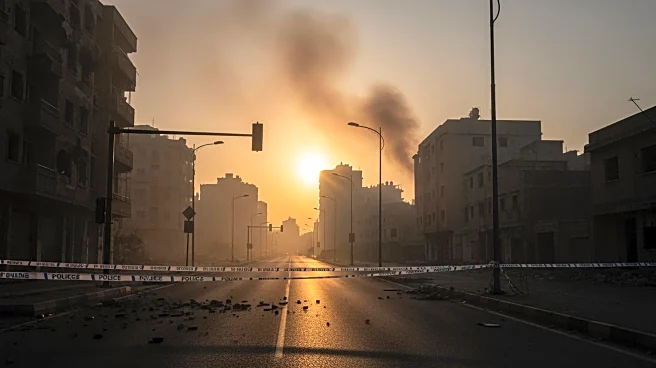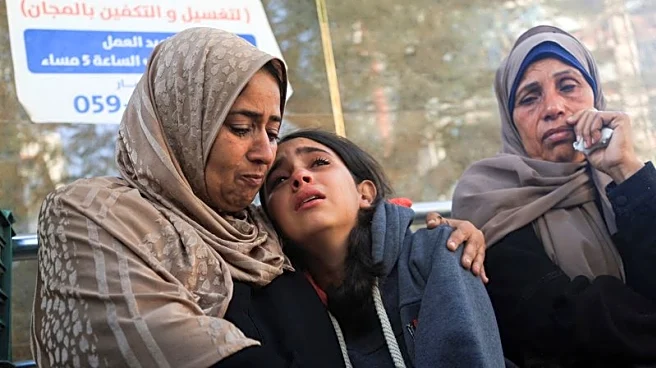What's Happening?
The Israeli Defense Forces (IDF) have reported striking three militants who entered an Israeli-controlled zone in Gaza. This action is part of ongoing tensions despite a ceasefire agreement between Israel and
Hamas that began in early October. According to data from the Gaza Health Ministry and UNICEF, the ceasefire period has seen an average of two Palestinian children killed daily due to Israeli strikes. These strikes have resulted in 318 deaths, including 67 children, and 788 injuries. The incidents primarily occur near the 'Yellow Line,' a demarcation separating areas of control between Israel and Hamas. The humanitarian situation in Gaza remains dire, with extreme food shortages and approximately 4,000 children awaiting urgent medical evacuation for life-saving treatment. Among these children is Sundus Hilis, a six-year-old critically injured by gunfire while attending a wedding in Gaza's Al-Daraj neighborhood.
Why It's Important?
The ongoing violence in Gaza, despite the ceasefire, highlights the fragile nature of peace agreements in the region and the severe humanitarian impact on civilians, particularly children. The high number of casualties and injuries underscores the urgent need for international intervention and support to address the humanitarian crisis. The situation poses significant challenges for humanitarian organizations attempting to provide aid and medical evacuations. The continued instability affects regional security and has broader implications for international relations, particularly concerning U.S. foreign policy and its role in Middle Eastern peace efforts. The humanitarian crisis could influence public opinion and policy decisions in the U.S., potentially affecting aid and diplomatic strategies.
What's Next?
The humanitarian situation in Gaza is likely to prompt increased calls for international intervention and support. Humanitarian organizations may intensify efforts to secure medical evacuations for injured children and provide essential supplies to address food shortages. The ongoing violence could lead to further diplomatic discussions and negotiations aimed at reinforcing the ceasefire and ensuring its adherence. Political leaders and international bodies may face pressure to take more decisive actions to stabilize the region and protect civilian lives. The situation may also influence future U.S. foreign policy decisions regarding aid and diplomatic engagement in the Middle East.
Beyond the Headlines
The persistent violence and humanitarian crisis in Gaza raise ethical questions about the conduct of military operations and the protection of civilian lives in conflict zones. The situation highlights the complex interplay between military strategy and humanitarian needs, challenging international norms and legal frameworks governing armed conflict. The long-term impact on Gaza's population, particularly children, could have lasting effects on the region's social and economic stability. The crisis may also influence cultural perceptions and narratives surrounding the Israeli-Palestinian conflict, affecting public opinion and advocacy efforts globally.












